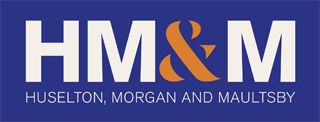HM&M Recommends that You Take Immediate Actions
Contact Us
Overview
The Setting Every Community Up for Retirement Enhancement Act of 2019 (the “SECURE Act”) was signed into law by President Trump on December 20, 2019. The SECURE Act includes many tax-related changes to Individual Retirement Accounts (“IRAs”) and other retirement provisions, which generally are taxpayer-friendly and promote retirement savings. Most of the changes become effective for tax years beginning after December 31, 2019.
However, in order to pay for these changes, the SECURE Act amends the rules governing the amount of time a beneficiary is given to take distributions from an inherited IRA. These revenue-raising changes are expected to cost taxpayers almost $16 billion in taxes over the next 10 years.
Most people should review applicable documents and consult their advisors (tax, financial, and legal) to determine if changes should be made (1) to their IRA and/or qualified defined contribution retirement plan beneficiary designations, (2) to their wills and/or (3) to trusts that hold inherited IRAs or are intended to hold such IRAs.
The Inherited IRA Rules Prior to the SECURE Act
Before the SECURE Act, if you inherited an IRA or defined contribution plan such as a 401(k) from a non-spouse and followed appropriately the “designated beneficiary” rules, you had to take required minimum distributions (“RMDs”) each year, but you could extend the withdrawals over your lifetime. So, for example, consider the case of an 85-year-old person who dies owning an IRA with her five-year-old great-grandchild as the designated beneficiary of the IRA. The five-year-old can take RMDs over his expected lifetime, thus yielding a very long time for the IRA to continue to earn income tax-deferred and spreading the tax on distributions over that long period. It is apparent from this example why this strategy has been referred to as the “Stretch IRA.”
The Death of the Stretch IRA
The SECURE Act severely limits the application of Stretch IRAs. Except for certain exceptions discussed below, a non-spouse IRA beneficiary inheriting an IRA after 2019 must completely withdraw all IRA plan assets within 10 years of the date of death (the “10-year rule”). (Some observers argue that the “10-year period” expires on December 31 of the 10th year anniversary of the date of death, thus giving some months’ additional time in most cases. This point should be resolved in the fairly near future.) There are no RMDs. One withdrawal at the end of the 10-year period could suffice. There could be multiple withdrawals over the 10-year period.
Inherited Roth IRAs must be liquidated in accordance with the 10-year rule.
IRAs inherited before 2020 generally continue to be subject to the rules in effect before the SECURE Act.
There are exceptions to the 10-year rule that apply to “eligible designated beneficiaries” (“EDBs”). Generally, a surviving spouse uses the rules in place before the SECURE Act, with certain SECURE Act modifications. There are four other classifications of EDBs, with complex rules applying to each one. These EDBs include: a disabled beneficiary, a chronically ill beneficiary, a minor child (as long as the child is minor under applicable state law), and a beneficiary not more than 10 years younger than the IRA plan holder.
Trusts as Beneficiaries of IRAs
Trusts may be beneficiaries of IRAs.
A common trust used as beneficiary of an IRA is a “conduit trust.” Generally, this type of trust is structured to pass along RMDs relatively modest in amount and to protect the corpus of the inherited IRA from possible beneficiary imprudence. As noted above, the SECURE Act does away with RMDs for inherited IRAs. Thus, it is possible that there could be only one distribution at the end of the 10-year period of the entire amount IRA. That defeats the IRA trust settlor’s intentions. Most conduit trust agreements need to be reviewed and possibly revised, when possible.
“Accumulation trusts” may also be recipients of IRAs. These trusts do not mandate that all IRA distributions are paid each year to beneficiaries. Changes may be in order for these trusts, too.
Agreements for both types of trusts should be reviewed by legal counsel in light of the SECURE Act. Where possible, the trust agreements may need to be amended in order to comport with SECURE Act provisions and to serve their intended purposes.
Changes to Estate and Retirement Planning
For many people, IRAs and other qualified retirement plans constitute significant portions of their personal wealth. Often, taxpayers’ income, estate and retirement planning strategies have been crafted to take advantage of Stretch IRA benefits. Thought leaders in these planning areas are currently posting a number of changes that should be considered in light of the Death of the Stretch.
Most taxpayers should review with their advisors the effect of the SECURE Act on their plans and what changes may be in order.
Questions?
Please contact your HM&M tax advisor to learn more about how the SECURE Act may affect you.
Vance Maultsby
Contact UsLatest Blog
The landscape of gift and estate tax planning is experiencing significant shifts, with the upcoming 2026 sunset looming ...
Are you planning to make a Qualified Charitable Distribution (QCD) in 2024? Yes? Then read on … A ...
Please refer to the list below for some changes that will be made for 2023 v 2024. Bonus ...
HM&M Updates
Last month, Senior Manager, Pearl Balsara was invited to speak at the 2023 FPA DFW Annual Conference in ...
We are pleased to announce the winners of the 2022 HM&M Excellence Awards. Ronna Beemer, Keith Phillips, and ...
Huselton, Morgan and Maultsby is composed of a spectacular team of individuals. During our annual What’s Happening Meeting, ...









